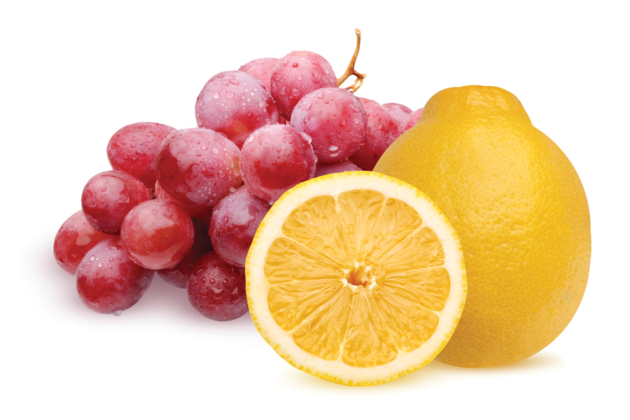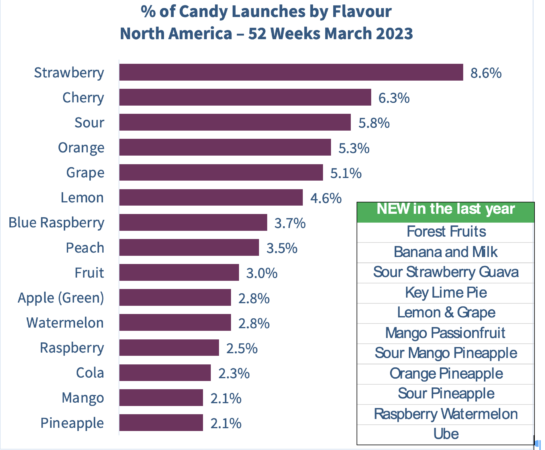
Charting candy flavour innovation
By Lisa Jackson
Food Trends Confectionery candy Editor pick flavours product developmentFollow these five steps for market success
 Adopt a multi-step approach to successfully launch new candies in the market. Photo © exclusive-design / Adobe Stock
Adopt a multi-step approach to successfully launch new candies in the market. Photo © exclusive-design / Adobe Stock Creating a delicious candy requires a formula that considers your end goal and the ingredients you have available to achieve results. But every new candy starts with an idea. These ideas can originate across your organization. Some may begin with marketing, R&D, or the leadership team, and occasionally, discovering the direction to take the flavour of your candy is random luck. Usually, though, a siloed or isolated approach to flavour innovation or guessing at your next launch doesn’t guarantee success. Just as you follow a formula to have a positive outcome at the bench, you can increase your chances of in-market acceptance by using a strategic process for finding innovative ideas.
The multi-step approach involves preparing to innovate, checking out the current market, plotting your path, formulating your candy, and developing a launch plan. The speed of your journey will vary depending on several factors such as:
- how frequently do you innovate;
- does your organization have a process to follow, or are you new to innovation;
- how many stakeholders must you consider, as multiple approvers can lengthen development time;
- what are your brand’s financial goals;
- do you need a quick win in the market with a seasonal flavour, or are you focused on growing your brand extensively?
- You may run through these steps quickly for a limited-time offer, while a significant new launch could take more than one year.
Step 1: Set your brand guardrails
Before starting your innovation journey, take time to understand the opportunities and limits within your brand.
For an established brand, confirm you clearly understand current customer perceptions. Is your brand viewed as traditional, novel, or cutting-edge? Mapping your brand’s persona helps you begin setting boundaries for how far you can take the product’s flavour.
You can explore how far you can stretch your brand using consumer research. Are any flavours, formats, or functionalities out of bounds for your brand? Can your brand change its shape or format or offer a trending flavour? Sometimes people have a high tolerance for brand innovation. Snickers, the well-loved combination of chocolate, caramel, and nougat, made a successful leap into the ice cream category as an extension that made sense to people. Sometimes, brands stretch too far. Cadbury, the premium U.K. chocolate brand, introduced Smash, a line of instant potatoes, and invested significant dollars to achieve reasonable success, but the effort lowered quality perceptions of the flagship product line.
Other questions to ask as you start the innovation process include, ‘What gaps can my brand fill?’ Gap analyses map trends against current offerings.
Sweet Chews, a recent innovation from Smart Sweets, recognized consumer desire for low-sugar options and interest in plant-based foods.
For start-ups, fully understanding your brand’s reason for being—your point of difference, and who you want to connect with your brand—are essential steps in the innovation process. Your answers will affect the flavour palette you can use. Defining success will also guide your efforts. If you’re selling principally online to a small audience with specific needs, reaching success will have different metrics than a national brand striving to gain one to two per cent market share.
With your brand guardrails defined, you can move to Step 2.

You may want to experiment with novel flavours like lemon and grape. Photo © MaskaRad / Adobe Stock
Step 2: Assess the candy landscape
In-market research will provide invaluable insights to guide your innovation journey. During your shopping trips, review what your competitors are doing with innovation in flavour and format.
Look along the candy aisle to see if you notice any patterns in new product development. Are new products featuring more melon or citrus profiles? Do you see global inspirations like yuzu or lychee?
Begin identifying the themes underlying the innovations. Are brands trying to deliver excitement, indulgence, or nostalgia through flavour?
Pay close attention to look and feel. Do you notice any new packaging formats that are getting more activity? Beyond the more readily available reduced sugar claims, what types of functionalities are emerging? Do you see candy with caffeine, antioxidants, or vitamins added? As you evaluate the trends, consider which will align with your brand guardrails.
Be sure to try new candies! Does the flavour experience deliver on the promise of the brand and the packaging callouts? Sampling is often a great way to learn what not to do.
As you do your research, continue to think about ways your brand can stand out. If you learn about a new flavour combination generating news, can you ‘fast follow’ with a similar profile? Or, if the profile is getting buzz because it’s exciting, can you create a combination that’s equally or more exciting?
Crossover flavours are happening across the food and beverage landscape. Sugar confectionery offers a versatile platform for borrowing flavours from other categories. If you have time, visit your local bakery, a juice bar, or a trendy coffee shop to see if you can find flavour inspiration. Think about recent cocktails or mocktails you enjoyed, too.
If time and budget allow, talk to your brand buyers. If you’re just starting, speak with candy buyers. Listening to people talk about their experiences provides a first-person viewpoint that can drive your innovation process.
If shopping and qualitative research aren’t possible, resources are available to give you insights into new product activity. Companies like Mintel or Innova track new product launches across categories and countries. By evaluating product descriptions and viewing packaging, you’ll get a glimpse of flavour profiles and clues about the experience they’re trying to deliver. You can also aggregate launch data to check out flavour trends. Figure 1 shows the top flavours launched in sugar confectionery across North America over the past 52 weeks. A few novel flavours introduced last year are ones to watch.

Figure 1: Top candy flavours in North America. Data © FlavorSum
Step 3: Plot your innovation path
With established guardrails and preliminary opportunity areas in place, it’s time to formalize your path to new product development. You can begin by collaborating with your team or trusted ingredient suppliers to brainstorm flavour ideas. Then, prioritize your concepts to align with your company’s production, brand, and financial goals.
While your ideas reflect the market and consumer insights, plan to get feedback on your concepts. You can have additional conversations with small groups of candy consumers or invest in quantitative research with larger groups of people to gauge their interest in your ideas. Social listening platforms, like Tastewise IO, offer additional insights into whether your new flavours or formats will generate excitement and conversation.
Now, it’s time to draft your formulas, establish relationships with ingredient suppliers, and create benchtop samples to taste.
Step 4: Formulate benchtop samples
As you formulate, use your brand guardrails and budget to guide your base formula and label claims. Before creating your benchtop samples, key components to consider are your sweetener, flavour, and colour systems. Further, determine if you’ll use HFCS, non-nutritive sweeteners like erythritol, or cane sugar.
How important are natural flavours to your customers? Will your flavour systems deliver results with your manufacturing process? Does your budget or desired flavour profile require a natural-and-artificial (N&A) solution?
If you’re striving to create a reduced-sugar candy, do you need to explore flavour modulators that improve the taste experience?
Are your brand buyers open to FD&C colours, or do you want natural options? Will natural colours deliver the visual impact people expect? If you have the budget and time, consider letting people taste your samples to optimize your formula.
Step 5: Map your launch plan
It’s time to get ready to launch your new candy idea. The commercialization process involves:
- ordering ingredients and packaging;
- confirming your label meets regulatory guidelines;
- setting production and ship dates;
- evaluating quality after product scale-up; and
- generating some buzz through marketing campaigns or social media outreach.
- After your candy launches, remember to check in with retail partners or your customers to get feedback and see if you need to adjust the formula.
Launching your next candy flavour is easier with an innovation process framed with insights and expertise. Check out FlavorSum’s Innovation Journey Guide at https://discover.flavorsum.com/innovation-journey-0-0.
Lisa Jackson is director of marketing at FlavorSum.
This article was originally published in the June/July 2023 issue of Food in Canada.
Print this page